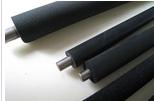Among the common lamps on the market, they are basically divided into two groups. The domestic lamps occupy ultra-low price, and the imported lamps become synonymous with burning packages. The quality difference between domestically produced lamps and imported lamps is mainly reflected in the following three aspects:
First, the accuracy of the light type
Most of the domestic lamp reflectors are not shaped by computer-aided design. Instead, they use a model of overturning, which directly pirates from the molded product. For more detailed things, few manufacturers really go deep into the research. For headlights, a final light pattern depends not only on the design of the reflector bowl, but also on the lens section (clear glass or polyester cover on the front of the headlights). It is completely achievable to completely imitate the two, but when it comes to the refractive index of the lens and the non-dot light source provided by the halogen filament, the accuracy of the light type is difficult to be easily copied.
We know that the refractive index affects the direction of light passing through the lens; and the distance between the lens and the reflector bowl also directly affects the accuracy of the direction of the outgoing light. The latter is easy to replicate, but the refractive index of the lens depends on the material itself, which is difficult to achieve complete reproduction without the analysis of precision instruments.
Moreover, for the halogen light source we use nowadays, it is not an ideal point source itself. As we all know, the filament has a certain length, and it is impossible to use the simple high school physics common sense to deal with the deflection of this light source. If the high school physics common sense can be directly used directly, we will buy a spherical glass shell by ourselves. After cutting into two halves, the inner surface is coated with a reflective film, and the lamp is placed at the position of the center of the ball, which can be used as a spotlight. It is.
In order to accurately control the final light pattern of the non-dot light source, it must rely on the professional auxiliary design software. After the light path calculation is performed by the software on the filament point by point, the light emitted from different positions of the filament at the light drop point is superimposed at this point. In order to get the final light design (this is why many people find HID after installation, the reason for the light divergence, the light point of the HID light source and the halogen light can not completely coincide, usually it is a curved fold line, similar to lightning same). Even when you use a bulb that is produced in a non-standard format, it will cause a deviation between the final exit light pattern and the design light pattern. A good luminaire will allow you to get the most out of your design, while only a small amount of light falls outside the design area.
Second, the high temperature resistance and oxidation resistance of the reflective bowl coating
The most intuitive feeling of the coating of the reflective bowl is the reflectivity. Usually, the newly purchased lights can achieve a good reflection effect. Only in the surface of the reflectors with poor coating quality, a large number of bubbles, impurities, protrusions and other visual quality problems can be found. This is not always seen on normal quality products, as this is a defective product for general quality control systems. However, what really makes us distinguish between quality products and by-products is the inherent quality of the reflective film.
Closed cell conductive EPDM Rubber Sponge
-EMI/RFI Shielding
- Can be used as grounding applications
- Conduct electrons throughout the material
- Pressure Sealing at low pressure
- Most Economical material compare with silver coated elastomers
- Temperature Stability between -40°C to 125°C
- Nuclear Bio Chem Resistance
- Salt Fog Resistance
Applications:
Electronic devices, Cable box, Satellite Box, Cellphone, Network Routers, Semiconductor, Gaskets, Computer Enclosures, Hand Held Devices, Medical Diagnostic, and Analytical Equipment, Aerospace & Automotive, Electronic Systems.



EPDM
Rubber Sponge
Specification
Typical
Value
Compression
at 25% deflection (kPa):
35-65
49
Compression
deflection at 50% (kPa):
80-160
112
Density
(kg/m³):
120+/-20
134
Compression
set (50% 22H 20°C):
25% Max.
14.1%
Water
Absorption, max. change in weight (%):
10
0.6
Heat
ageing, change in compression deflection, 22hrs at 100°C:
+/-30%
PASS
Flammability:
FMVSS-302
PASS
Elongation
at break (%):
N/A
180
Tensile
strength (kN/m²):
N/A
>500
Temperature
range (low-high):
N/A
-40 to +70°C
High intermittent:
N/A
+100°C
Resistance
to Air and UV:
EXCELLENT
Resistance
to Oil:
POOR
Resistance
to Acids:
GOOD
Environmental
Protection:
CFC AND HFC FREE CAN
BE RECYCLED
SPECIFICATION DATA
Conductive Epdm,Rfid Conductive Epdm,Rfi Conductive Epdm,Anti Static Conductive Epdm
JINAN EMI SHIELDING TECHNOLOGY CO., LTD. , http://www.emirfi.com